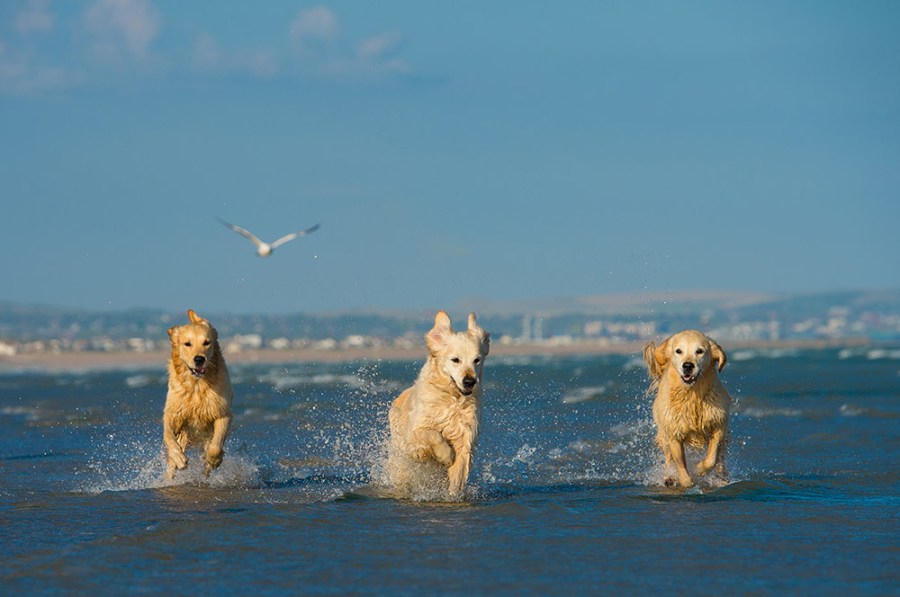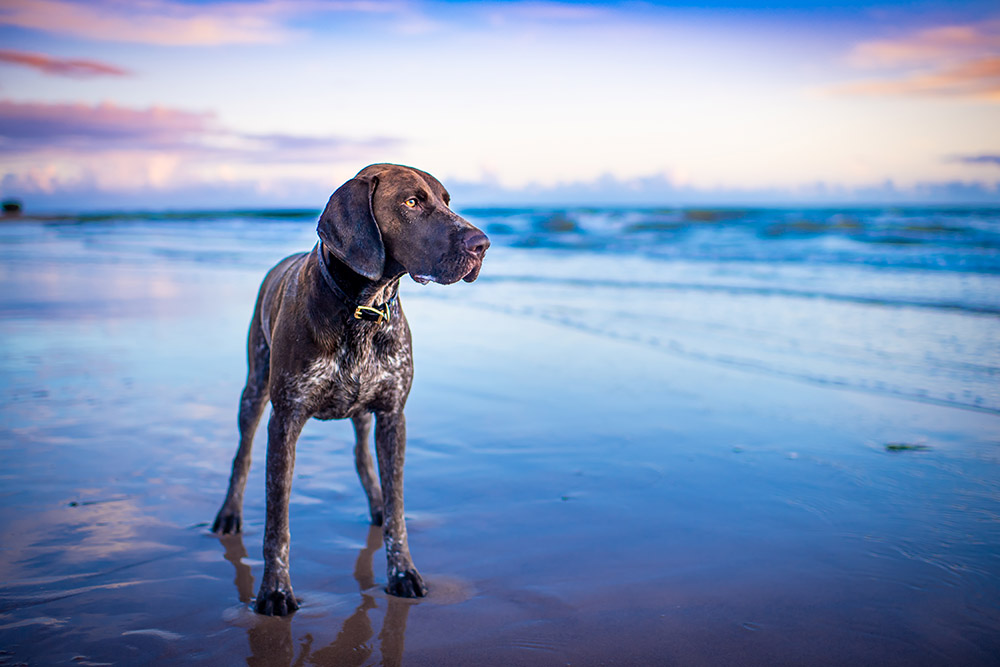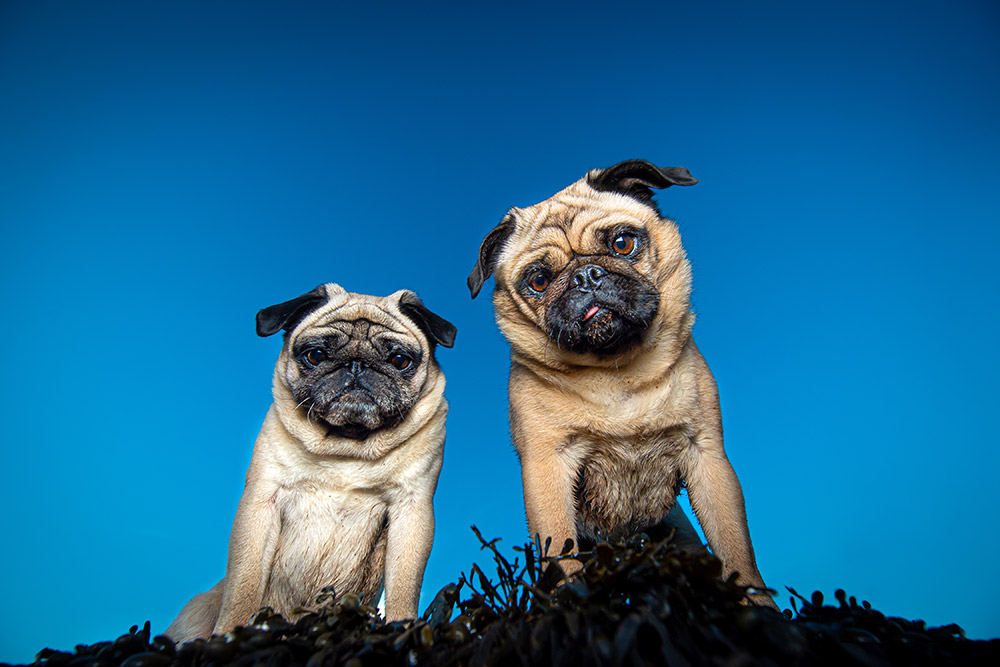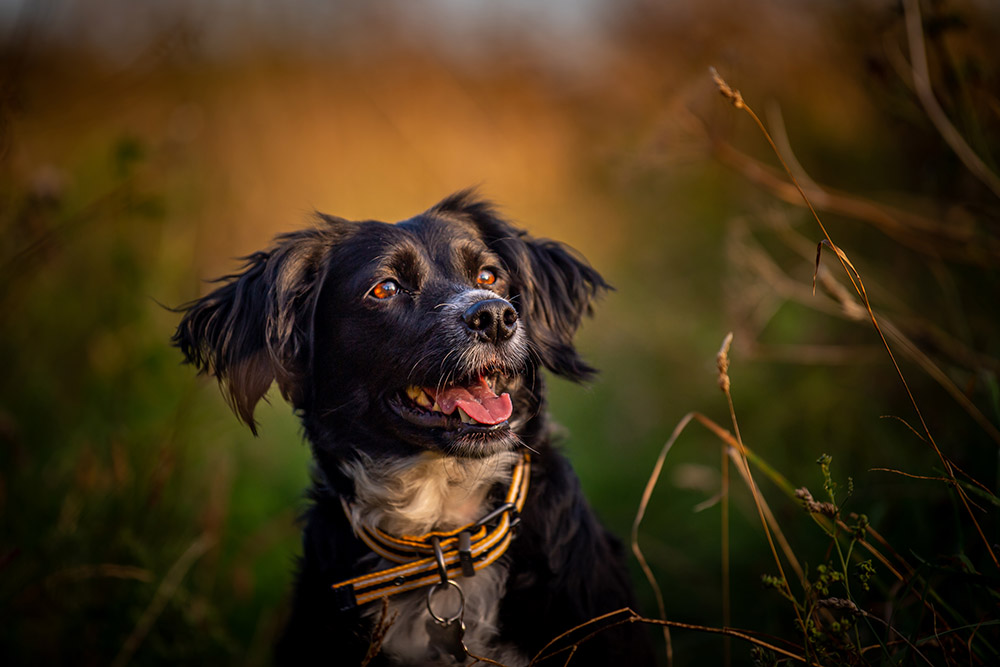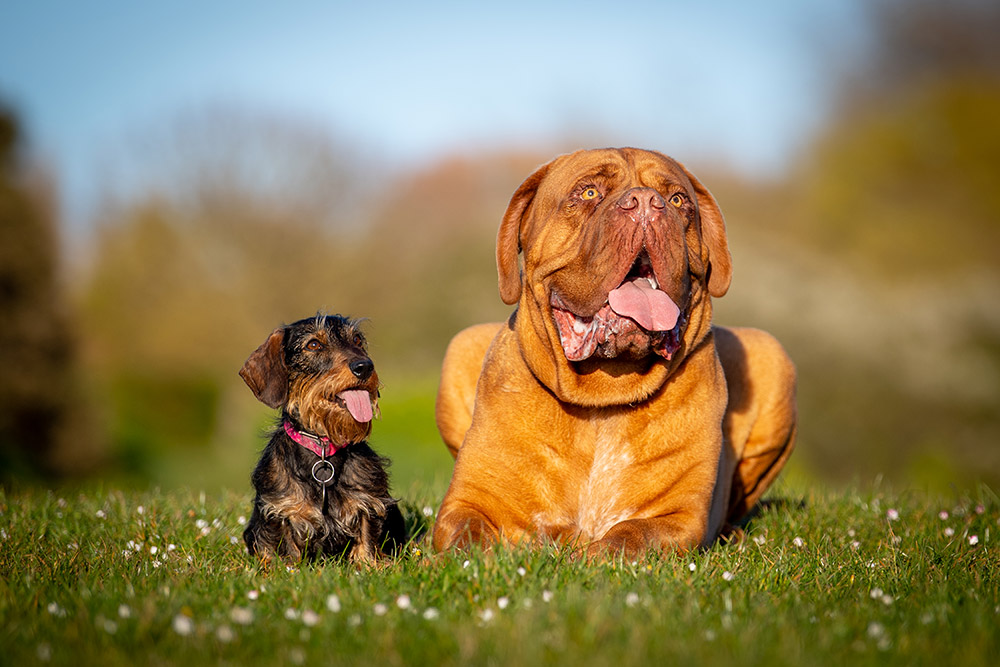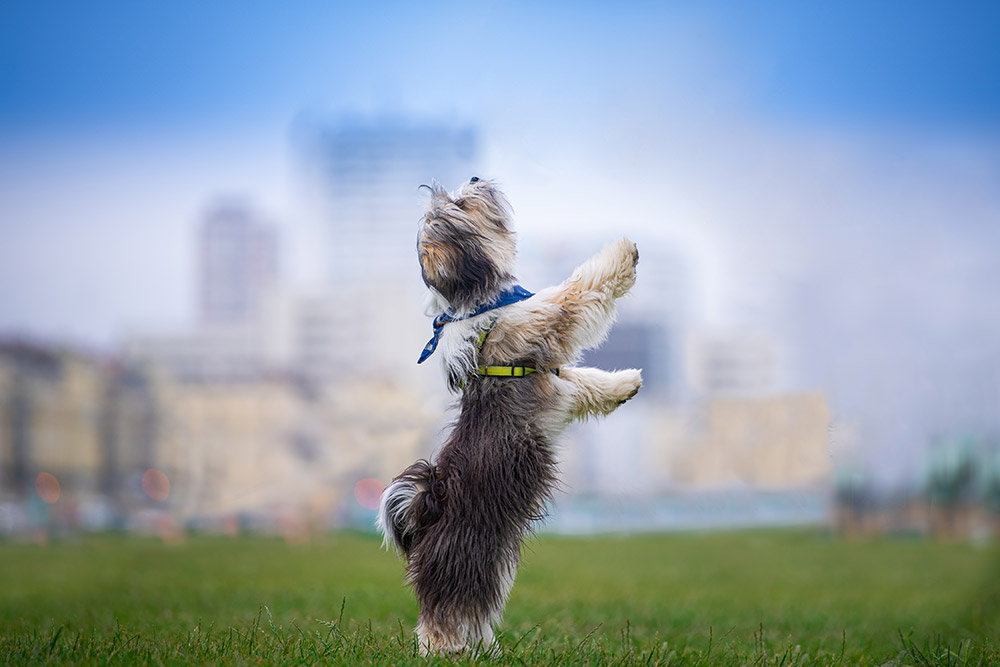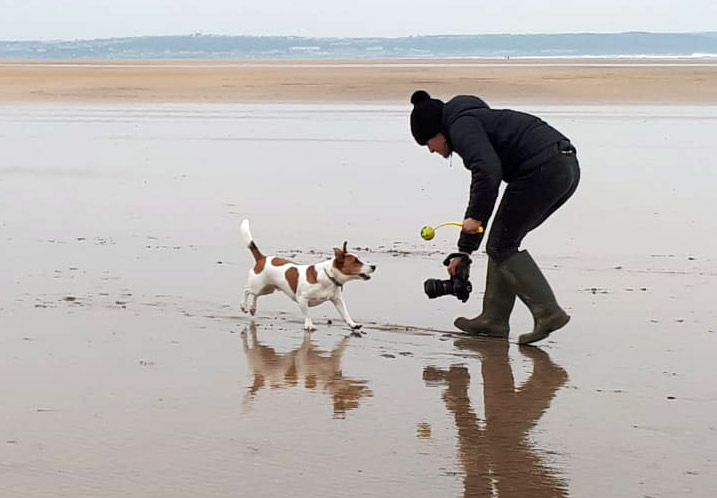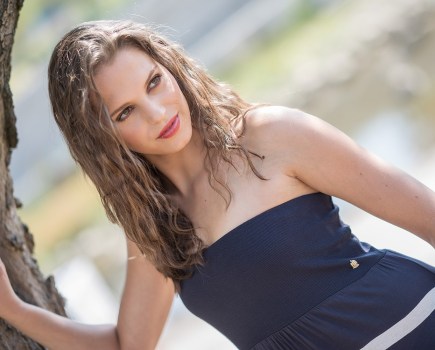Rhian White shares some secrets for cracking dog photography with Geoff Harris.
Dogs. Many of us adore them, some of whom acquired these wonderful animal companions during the Covid-19 lockdowns. Not only is dog photography hugely rewarding in itself, but it can also form the basis of a photographic business or profitable sideline. But as with any photographic discipline, it’s not just a case of pointing your camera at Buddy or Bella and blasting away.
To succeed in this genre you need to acquire a range of skill sets, including those from portraiture, action photography and even documentary work. You need to be able to work fast too, as lively dogs don’t tend to stick around as you fiddle with camera settings. One of the most accomplished dog photographers we’ve featured in AP is Devon-based Rhian White, so we thought it was high time for a more in-depth interview with this master of canine-related creativity.
Learning how to do dog photography
It’s a testament to Rhian’s hard work and determination that she is entirely self-taught and, as she freely admits, started from a very low knowledge base. “Fourteen years ago I got my pug Boo and loved her so much – I wanted to take photographs of her happy, but didn’t know what I was doing.
“I didn’t understand the exposure triangle, camera settings, or anything – just how to turn the camera on! It was okay on Auto mode if Boo was still, but anything where she was moving just became a blurry blob.”
An understanding of the basics of photography and camera settings is only one part of the equation. “At the beginning, I didn’t understand the motivations of dogs, and how to use light,” she explains. There was a learning curve to ascend when it came to gear too.
“I eventually bought a Nikon D300s and then an 18-200mm “superzoom” lens, thinking it would cover me for everything I needed – but of course, the quality of this lens was not very good. I soon realised that anyone who is serious about dog photography will get a 70-200mm f/2.8 lens.”
Back then there were hardly any dog photography videos online, workshops or mentoring available, but Rhian stuck at it. “Buying magazines like AP helped, but what really helped was looking at a picture I liked and trying to work out the settings so I could see what might work in a similar scenario. I also started to ask people in parks and beaches if I could take photos of their dogs to practice. One good aspect of my character is that I never give up.”
Three years later Rhian moved down to Brighton from the north of England. While looking for a job as a graphic designer, she noticed there was a gap in the market for dog photography. “Back in 2010, not many people were doing the kind of dog photography I liked – happy, colourful pics of dogs outside. Rather, there were a lot of studio shots. So, I thought there was a gap in the market and built my dog photography business over time.”
Technical challenges of dog photography
Rhian has a very clear approach to dog photography and at the heart of this is an understanding of dog psychology. “You have to find out what motivates them. Find a location where they feel safe, happy and relaxed. If you have a happy dog, you get happy pictures. Dogs can get distracted by other dogs, people going past on bikes etc, and you need to be aware of this.”
Next up is an appreciation of what stimulates the dog. “I find they are motivated by balls and toys, food, other dogs, their owner/person, and doing their own thing – for example, sniffing and exploring.”
Rhian also finds out as much as possible about the dog before the shoot, which enables her to come up with ideas. “You also need to reflect the dog’s energy. Some are excited and want to play, while some can be nervous, and you need to change your behaviour. I will reflect on what the dogs want to do in order to make them feel comfortable, as this means better shots.”
As part of this approach, Rhian rarely goes right in close to the dog with a portrait lens at the beginning of their relationship – “the dog doesn’t know who I am and thinks why should I play with you?” Instead, she prefers to use her trusty 70-200mm f/2.8 lens in a more passive, documentary capacity.
“Later on, if the dog allows it, I work in a more interactive way and get up closer using my 35mm or wide-angle lens.”
It’s also important to plan what kind of shots you’re going to start off with. “I usually start with action shots. The dog leaps out of the car, maybe they are a bit restless after the journey, and they want to run and sniff and play. They don’t usually want to sit still for a portrait. Spaniels, for example, won’t seem to run out of energy even if tired, so understand the breed.”
Seize the moment
Rhian has a range of tricks for getting a lively dog to stay still for a portrait, one of her favourites being a pretend throw of a ball or toy – the dog stops in expectation and in that moment you can get a portrait. “Another rule of thumb is to tire the dogs first, before trying to do any portraits. Always work around them.
“Then you need to think about where you want them to stay still. If you think they would look good on a log, for example, work out lens choice, composition, settings etc beforehand. When I am ready, I work fast, rather than keeping the dog waiting while I try to figure it all out.
“Taking too long to get set up is one of the most basic mistakes in dog photography, as they get bored. People put the pictures first and the dog second. It must be the other way round.”
If a dog is not good at staying still, Rhian will also use ‘high-value treats’, such as a snack. “We never make a dog do anything they don’t want to do, but they soon work out the game if you give them what they want – always within the realm of what is safe for the dog to do and what they want.”
The importance of light in dog photography
Another core component of Rhian’s approach is an understanding of light and how to use it. “You have to make sure the light is good, otherwise, it doesn’t matter about your gear or settings. I generally go out a couple of hours before sunset and try to avoid the brightest part of the day, which can be tricky exposure-wise.”
Depending on the conditions, for action shots, Rhian’s starting point is 1/1000th sec or thereabouts, with a wider aperture and lower ISO setting. “I prefer blurred-out backgrounds but sometimes the background is interesting and you want to keep detail. I make a decision based on the location.
“Generally, I like wider apertures and I work out shutter speed based on this and the speed of the dog – a whippet will move much faster than a pug, for example. When photographing multiple dogs I have to bring the aperture down.
“Unless they are exactly the same distance from you, running together, it’s easy to get one in focus and one out. So I bring the aperture down and try to get dogs together as much as I can. In terms of more static portraits, my starting point is aperture and the amount of background blur, then my composition and so on.”
While Rhian mainly uses natural light, she does sometimes use a flashgun with a diffuser, mainly with her 14-24mm wide-angle lens. “Sometimes I have used off-camera flash but it can end up being quite a complicated set-up with dogs. By the time you are ready, everyone’s probably tired and the light is going.
“A wide-angle lens with a hot-shoe flash makes it easier to get the dog where you want or follow them around. I use a basic old flash, so you don’t need to spend a lot. You can also use light boxes, although, while continuous light with a light box could be easier, it might distract or worry the dog. I like to keep everything small, simple and intimate.”
When it comes to focusing, Rhian favours continuous AF using back-button focusing so she can track movement, although she will change to manual focus if appropriate. “I always focus on the head and eyes – you can get away with a lot if the eyes are in focus unless the dog is side on. If using my 70-200mm lens I generally use the middle focus point as I find this easier for staying sharp.”

The biggest challenge with dog photography
Rhian reckons the hardest job is capturing multiple dogs who are interested in different things. “It can be a challenge when the client has several dogs and wants them all together in a shot. Several dogs running together is particularly hard, and I find four or five nigh impossible unless running side-on.
“I have been known to Photoshop dog portraits together. You can’t force the dogs to do something they don’t want to do, and if the dogs are happy and the client happy, I don’t see a problem with this. Ideally, you get the image right in camera but my job is to get the clients an image they like and never to upset the dog. I rarely put dogs on leads to get the shot unless in an emergency. I try to get them tired and try to work with their motivations in a suitable location.”
Rhian’s Top Tips for dog photography
1. Get your priorities right
Always put the dog first, no matter what. People take far too long to set up for shooting or taking the shots. If the dog is sitting there for five minutes while you take the photo, it will get bored. You need to keep them motivated and engaged.
2. Think like a dog
Is this fun, is it interesting, is it too hot? Put yourself in the mindset of the dog. The dog always comes first and I never get them to do anything they don’t want to do. Only after that, think about the light and the camera settings and so on.
3. Manual labour
When it comes to settings, it’s always better to shoot in manual mode. I’d only recommend using aperture or shutter priority if you are totally stuck. Doing my course will help you go from auto to manual settings, and this will make a big difference to your hit rate.
4. Back-button focus
For focusing, I use back button focusing with continuous AF, as this means you can track moving dogs quickly and effectively. I will sometimes use manual focus for trickier situations, so it’s worth turning on any manual focusing aids on your camera.
5. Think about the light
Shoot when the light is best, not when it is the most convenient time for you. Shoot in the middle of the day in the summer, and you can get very hard shadows or run the risk of overexposure – the dog will soon get hot too, and your shots will suffer.
6. Take along treats
Take something that motivates the dog, such as high-value treats or their favourite ball or toy – that way you can use what they want to get them to play, run or stand still, depending on what the dog wants to do. William, above, was chasing Rhian to get his ball back!
Rhian’s Dog Photography kit list
Nikon D5 DSLR
Fourteen years ago I went to Jessops and they recommended the Nikon D70s. I am still happy with the Nikon system, so I see no reason to change it – the AF and low-light performance are fine for my needs. I also prefer DSLR optical viewfinders, but might consider changing to mirrorless at some point in the future.
Read more about the 12 best Nikon DSLRs ever and the best mirrorless cameras in 2023 here.
Nikkor 14-24mm f/2.8 lens
This wide angle lens is my fourth and I love the fact that it’s nice and fast at f/2.8. The wider end is very useful for getting the dog in context and I sometimes use it with flash. The only problem is, the lens is quite bulbous, so I can’t protect it with a filter. When working on beaches with dogs running around kicking up sand and stones, I am very careful!
Nikkor 35mm f/1.4 lens
This 35mm is ideal for dog portraits. I can hold my hand out with a treat to attract the dog while bringing the camera back far enough to get a nice portrait. With a 50mm this would be much more awkward, so the 35mm is more flexible and I find the fast maximum aperture perfect for the kind of images I like to take.
Read more about the best lenses for Nikon DSLRs here
Nikkor 70-200mm f/2.8
This fast, quality lens is my mainstay for action photography. The focal length is perfect for dogs – you can zoom out if they are nervous or zoom right into 200mm for a portrait with a nice background blur. A 300mm lens would mean I am shooting too far away – I have to be able to communicate with everyone, including the dogs!
Read more about the best zoom lenses for Nikon DSLRs
Adobe Photoshop and Lightroom
Lightroom is very handy for batch-processing raw files. The latest upgrade enables you to select both sky and subject and is a real game-changer. I do a universal edit then I do more precise work on selected images, bringing up shadows or boosting colours. I only use Photoshop when I have to remove subjects or add them to an image.
How to start your own Dog Photography business
What tips does Rhian have for people wanting to take the extra step and set up a dog photography business? ‘Work on your SEO so customers can easily find you on Google, but before that, realise that your biggest marketing tool is your photographs. If they are not up to scratch, it doesn’t matter about your SEO or social media skills. You never stop learning and I try to make any new shoot my best ever.’
Rhian is sceptical about investing in social media marketing. ‘I have found it expensive and you can waste money and time. It’s now much harder to reach out to customers on social media compared to a few years ago, so look at free ways to raise your profile – but never work for free, as people won’t respect you.
It’s important to be realistic, too. Although I was able to use the lockdowns to work on my online course and attract new students, as well as work on video lessons, you need to have a plan B in case you are forced not to work again. I work as a joiner too, making cabinets and photo frames for clients – fortunately, I really enjoy this as well!’
Learning from Rhian – take a dog photography course
Rhian has written an extensive 20-lesson course on mastering the art of photographing dogs in the outdoors. ‘It’s absolutely everything I know, from choosing a suitable location, motivating dogs, lighting, portraits, action shots plus post-production in Lightroom and Photoshop. It’s very detailed and includes a lot of 1-1 help from myself, so it’s really for people who are serious about taking better images of dogs, but it’s accessible and written so that everyone, including complete beginners, can get involved.’
Rhian has also recently released an extra lesson on photographing black dogs. ‘Many of my customers and students have black dogs and really struggle to get good images. This extra lesson specifically addresses the problems that they have.’ For more info about Rhian’s course, see rhianwhitephotography.co.uk/20-lesson-online-course
Rhian White
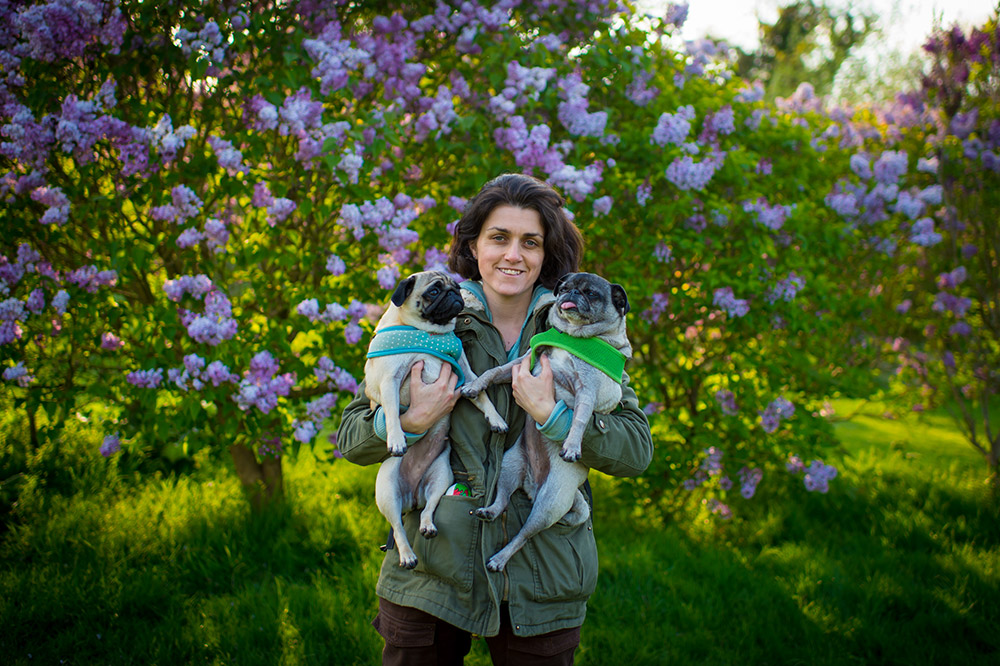
Rhian is a long-established ‘real life’ dog photographer and also runs a successful online course. See more about her at www.rhianwhitephotography.co.uk and Instagram:@rhianwhitephotography
We hope this article has inspired you, so do send us your best dog images (ap.ed@kelsey.co.uk) or get in touch with us via Facebook or Twitter.
Need more guidance on photographing pets? Check out our pet photography guide here, or have a look at how to photograph animals and how to get started in portrait photography.
Looking for more dog photography equipment recommendations? Check out the best cameras for portraits and the best lenses for portrait photography.

